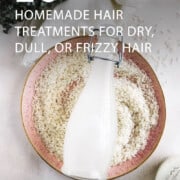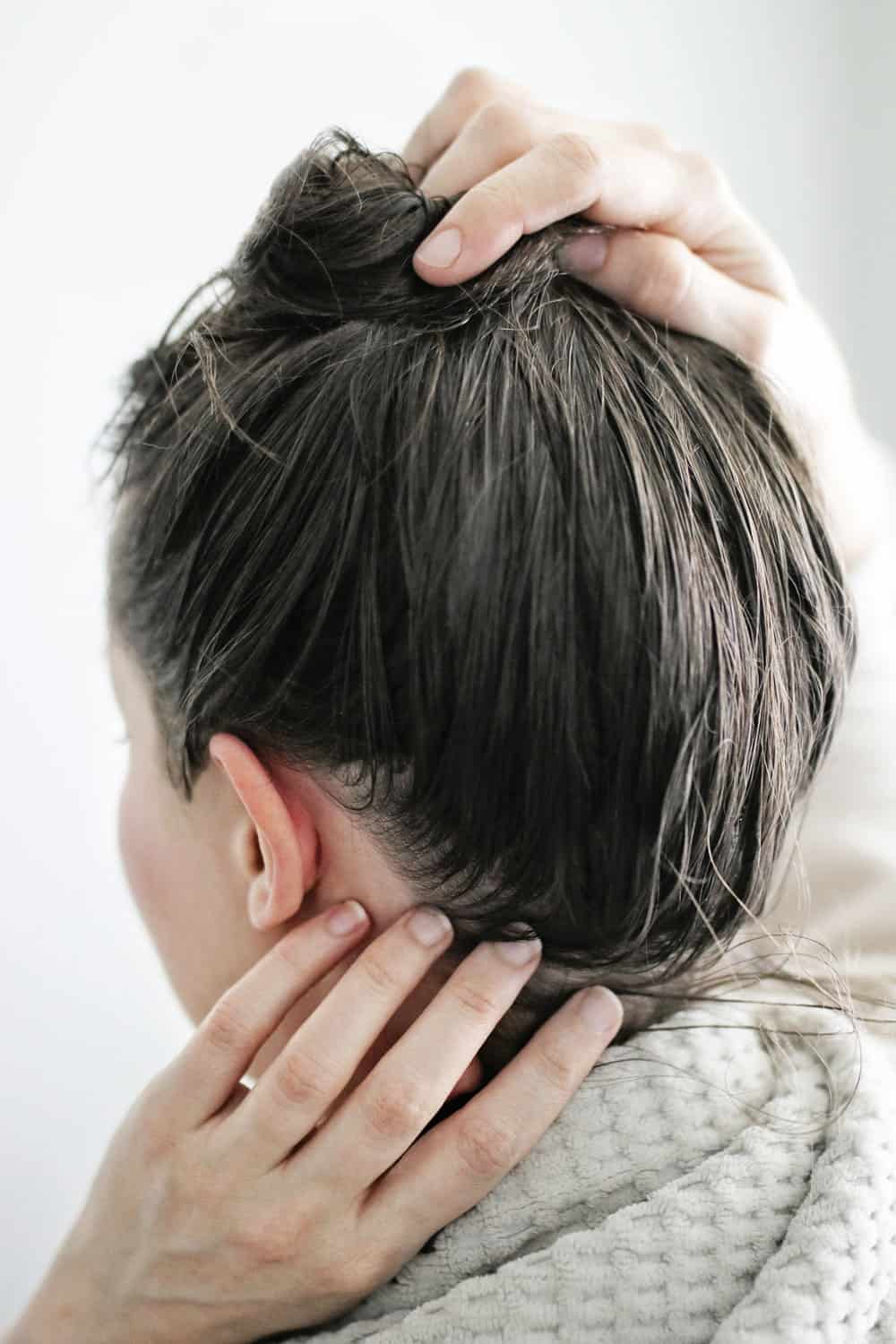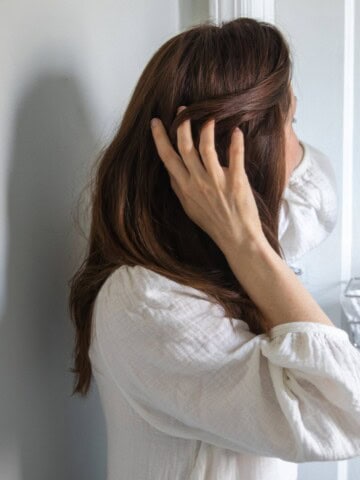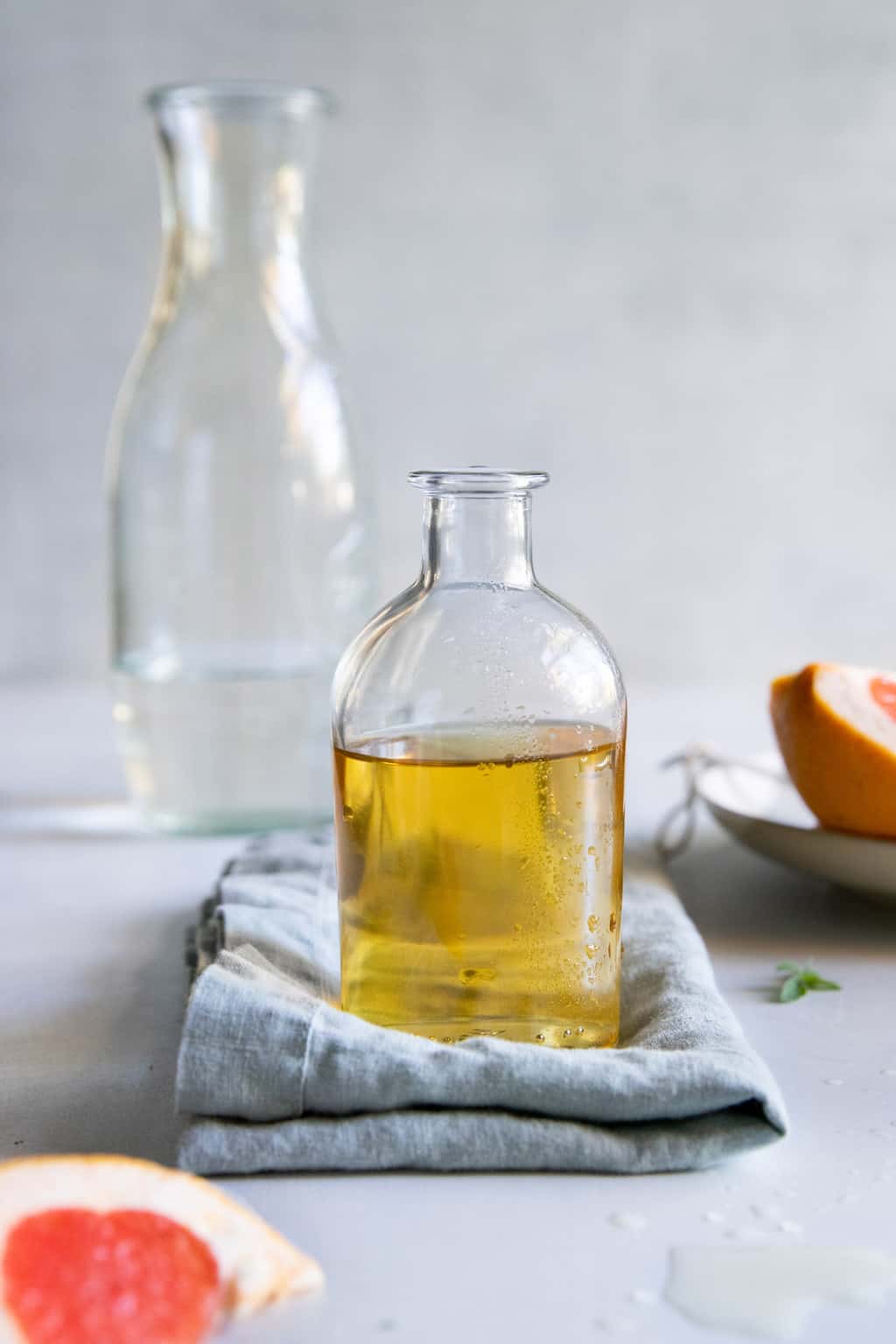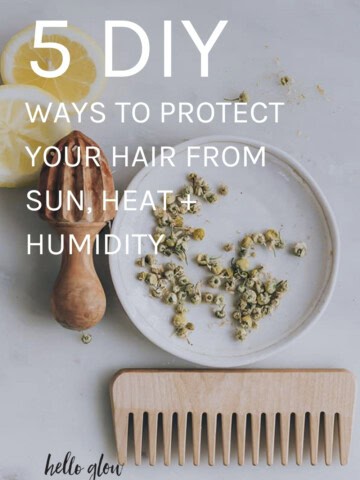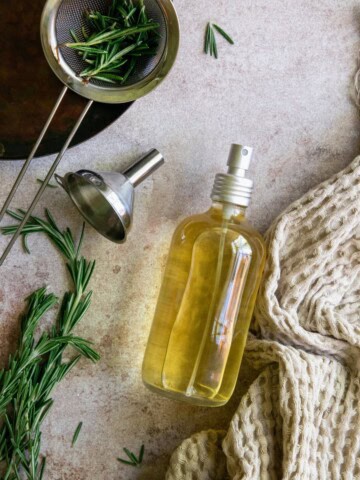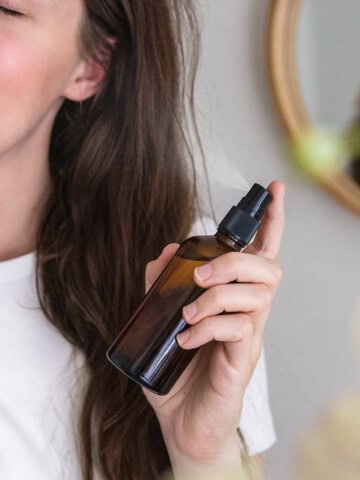Let's face it: Few of us are blessed enough to wake up with perfectly smooth, de-frizzed hair that cooperates with our styling efforts. Dry, dull, and frizzy hair is common, but not something we should have to deal with. Here are 20 tried-and-true homemade hair treatments for dry, dull, or frizzy hair.

Meet the Experts
Daniel Koye, a licensed cosmetologist and hairstylist
Penny James, New York City trichologist and hairstylist
Jennifer Matos, stylist at Rita Hazan
Bridgette Hill, certified trichologist
Gina Rivera, celebrity stylist and founder of Phenix Salon Suites
Jump to:
20 Homemade Hair Treatments
"Hair becomes dry when your natural oils don't get to the ends of your hair," explains Daniel Koye, a licensed cosmetologist and hairstylist who works in theater, film, and television. Dry hair is often the result of overuse of hot styling tools or environmental factors and, luckily, can be handled with a few changes in routine.
For healthier hair, check to make sure your styling tools aren't at the hottest setting and avoid overuse of dry shampoo, which can make the hair look dry, according to New York City trichologist and hairstylist Penny James, IAT. "A poor diet will also lead to dull, dry hair, so make sure you are eating well—lots of protein—and taking vitamin D 2,000 IU per day," she says.
You can also add in these at-home hair solutions for just about every hair problem. These easy DIY hair masks are made with simple ingredients you probably already have in your kitchen.
Need to moisturize?
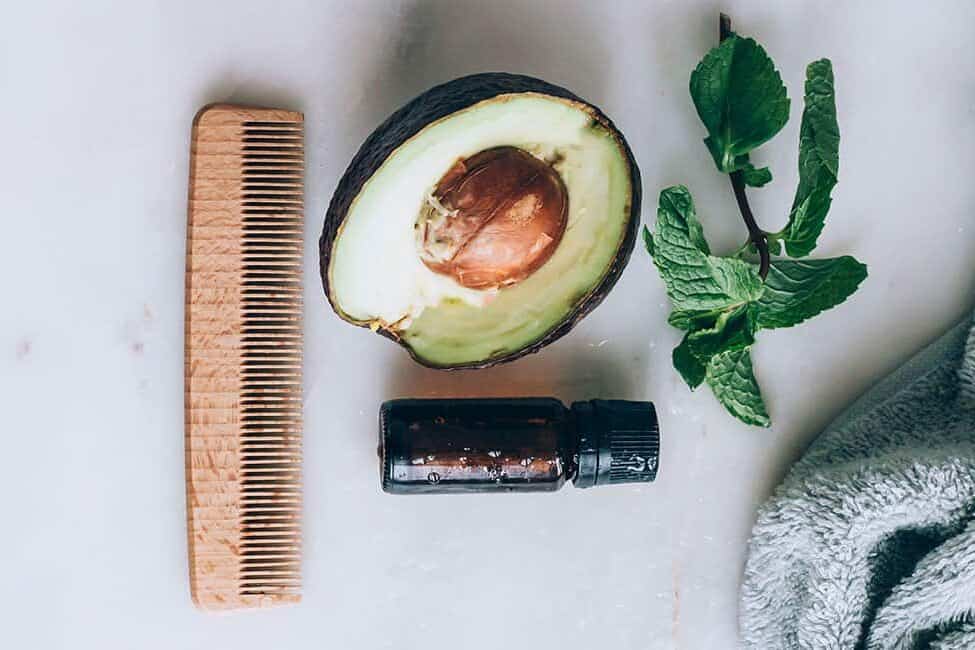
1. Avocado
For clients with thick and coarse hair, Jennifer Matos, stylist at Rita Hazan, likes to use a mask containing avocado, coconut oil, and honey. "Avocados are a great source of biotin, potassium, and magnesium, which help seal cuticle cells and prevent breakage, and the hair will look smooth and shiny," she says.
Mash up half an avocado and add a couple of drops of peppermint essential oil. Shampoo hair, squeeze out the water, and apply the hair mask. Let it sit for 15 to 30 minutes and then rinse. "This type of mask can be applied once a week before shampooing your hair," says Matsos. "Rinse out the mask in the shower, then shampoo and condition as normal."
Not only did my hair come out super soft—not flat or greasy at all—but the added scent made sitting around with green goop on my head much more pleasant.
If you're not worried about weighing down your hair, you can amp up the avocado mask moisture by adding 1 to 2 tablespoons of oil, egg yolk, or yogurt.
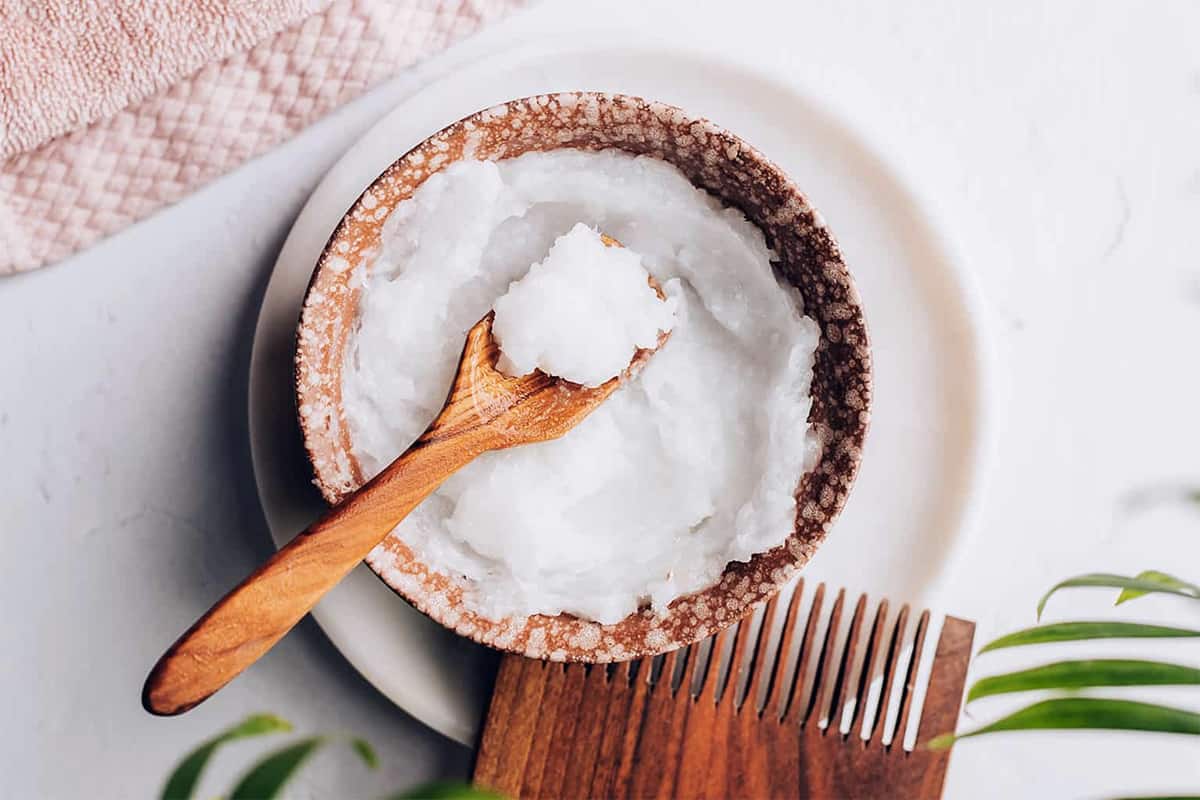
2. Coconut oil
The wonders of coconut oil never cease! This oil is heavy, which is great for penetrating deep into the hair shaft. But use it sparingly, especially if you have fine or thin hair.
"Coconut oil strengthens and protects fine hair by strengthening the protein bonds, attracting moisture elements, and sealing those elements and thus providing elasticity," says Bridgette Hill, certified trichologist. "When used conservatively on the lengths of hair, it protects strands from chlorine and salt when swimming."
Take a small amount of coconut oil, rub it between your hands, and apply just to the ends of damp hair. If the oil is in the solid form, just warm it in the microwave for about 10 seconds until it becomes liquid, and let it cool a bit before touching it (be careful because it can get VERY hot).
Got really dry hair? Keep the oil on overnight and shampoo out in the morning.
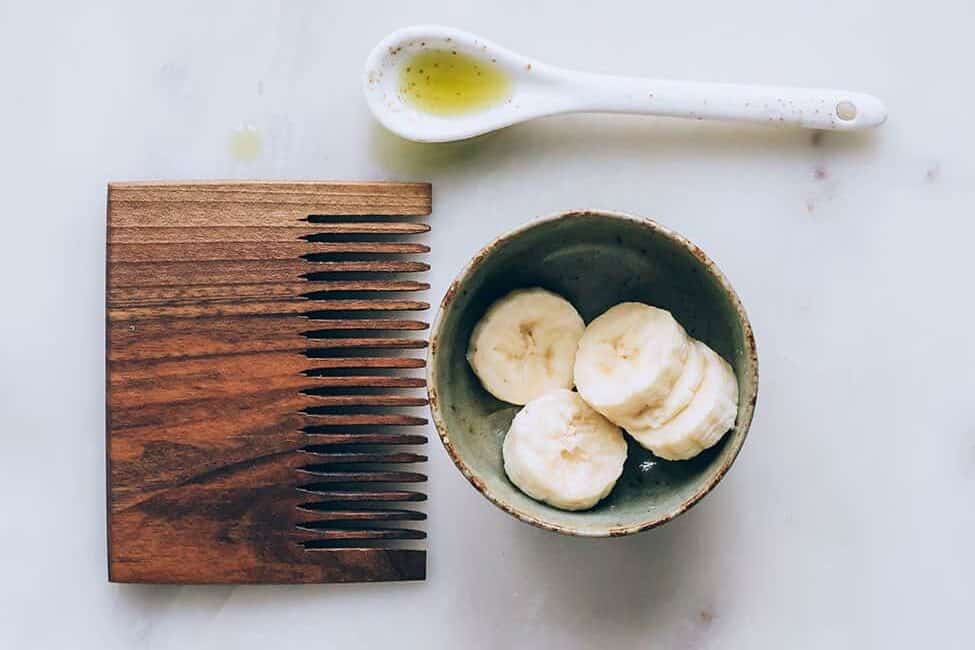
3. Banana + Olive oil
Not only can bananas work their magic on your feet, but they are awesome for your hair! Mix a banana with 1 tablespoon of organic extra virgin olive oil, and mash thoroughly until the banana is pureed.
You definitely want a super-smooth, smoothie-like texture so you don't end up with banana chunks in your hair. Massage it into your hair and scalp. Leave the treatment on for 30 minutes, then rinse thoroughly and shampoo.
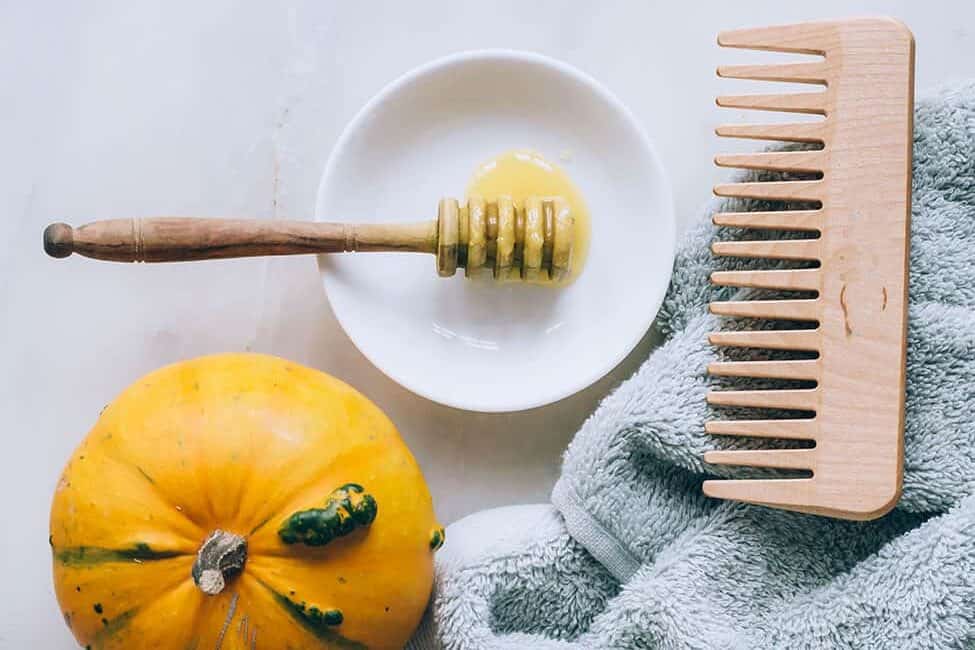
4. Pumpkin + Honey
This could be the perfect use for canned pumpkin puree leftovers (because there are always leftovers). Pumpkins have lots of amazing benefits—they're rich in vitamins A and C, beta-carotene, potassium, and zinc [source].
Add 1–2 tablespoons of honey, a natural humectant, to 1 cup of pumpkin puree, and pack as much as you can onto your hair and scalp. You'll need to either wrap your hair in saran wrap or wear a shower cap to keep the mask in place.
Let it sit for at least 15 minutes, and then rinse. Feel free to apply to your face as well!
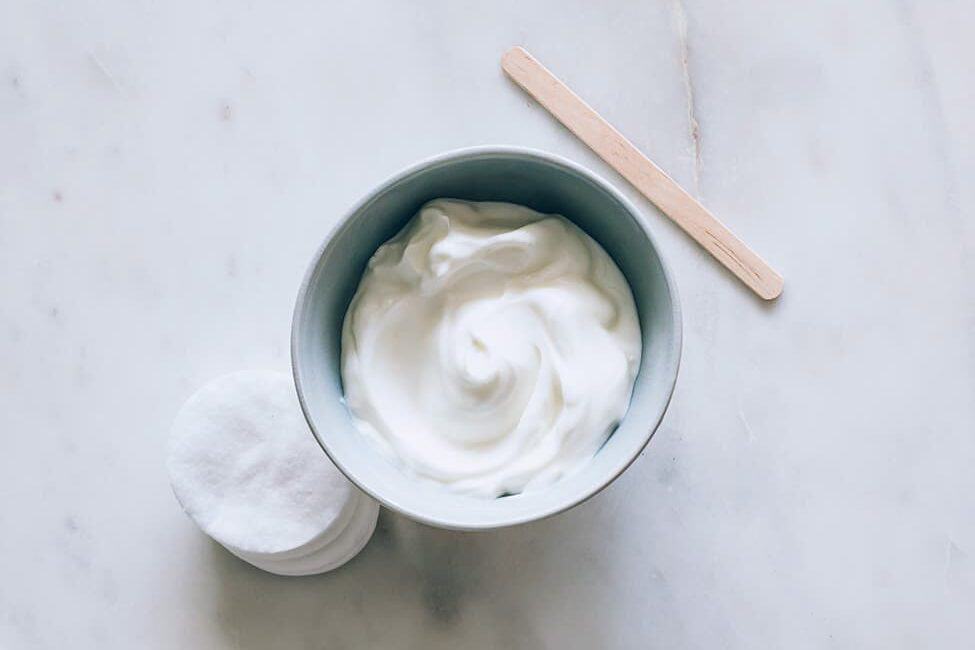
5. Yogurt
Yogurt is naturally high in healthy fats and proteins, which will leave your hair super shiny and loaded with maximum moisture. There are a lot of options out there when it comes to yogurt, but it’s best to opt for the high-protein, low-sugar, plain variety (no fruit additives).
Protein strengthens the hair shaft, which helps prevent split ends and hair damage. And sugar is a no-no if you want to keep yeast and flakes at bay.
Gina Rivera, celebrity stylist and founder of Phenix Salon Suites, recommends soaking your hair and massaging in 1 cup of plain yogurt. "Put on a shower cap and let the yogurt sit on the hair for 30 minutes. Then wash and condition with your favorite professional product," she says. "I recommend the Pure BioGen Complex wetline because it's packed with biotin, collagen, and nutrients."
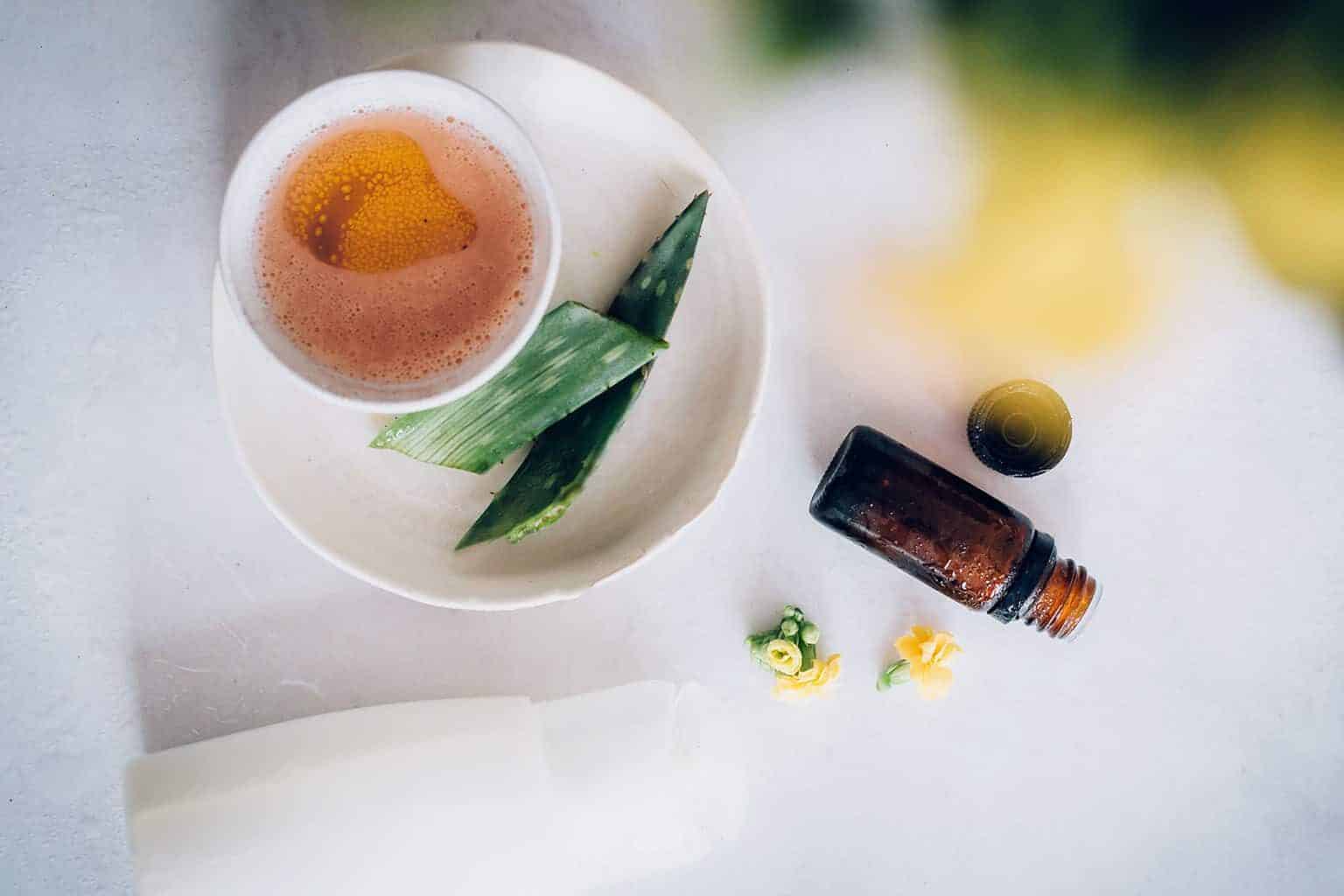
6. Aloe vera
We use aloe vera all the time in natural healing remedies, but did you know that it also works wonders as a homemade hair treatment? Aloe vera is a great natural conditioner that leaves hair feeling smooth and shiny. It's also a good leave-in product when applied to damp hair that is primarily air dried. "I have found that aloe vera performs best on hair that is air dried for experiencing the shine and softness this plant has to offer," says Hill.
Applying it directly to locks helps promote hair growth, reduces irritation (such as dandruff), and conditions your hair. I like to add a little cedarwood essential oil to enhance circulation in the scalp, thus promoting healthy growth and slowing hair loss.
Mix 2 teaspoons of fresh aloe vera gel or store-bought aloe with 3 drops of cedarwood essential oil. Massage the mixture into your hair, and let it rest for half an hour. Shampoo and condition as usual.
Need a color boost?
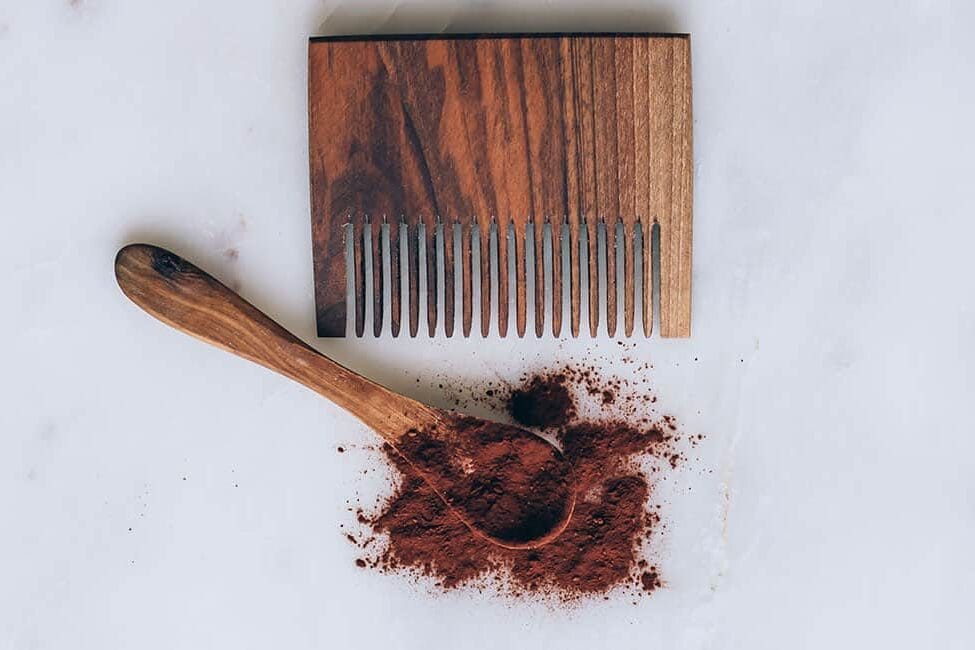
7. Cocoa powder
Give brown hair a boost with cocoa powder. For a stay-at-home DIY with safe ingredients, try a combination of cacao powder, plain yogurt, honey, and apple cider vinegar to give you a deeper, richer brown. I couldn't test this one personally, but if you can make bronzer lotion with cocoa powder, why not try it in your hair?
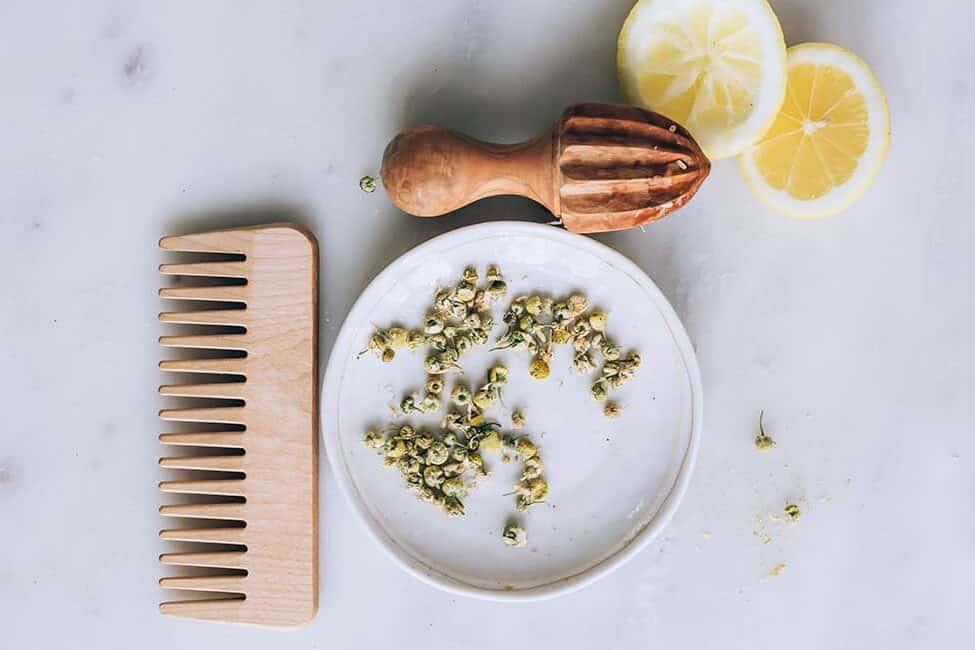
8. Lemon + Chamomile
To warm up ashy blonde hair, try lemon and chamomile herbal tea. Both have long been used as lightening agents for blonde hair. You can do a simple hair rinse by tilting your head back over the sink and pouring a cup of cooled tea combined with the juice of a lemon over clean, wet hair. Let it sit for about 5 minutes and rinse.

9. Purple Kool-aid
Of all the homemade hair treatments I've tried, this one is by far my favorite. Are your blonde locks starting to look brassy? Just do a rinse with grape-flavored Kool-Aid to get rid of the dreaded orange.
This totally works! I have never had a problem with my hair turning purple (I have heavy blonde highlights, not all-over color), but if you do see a hint of color, just shampoo again.
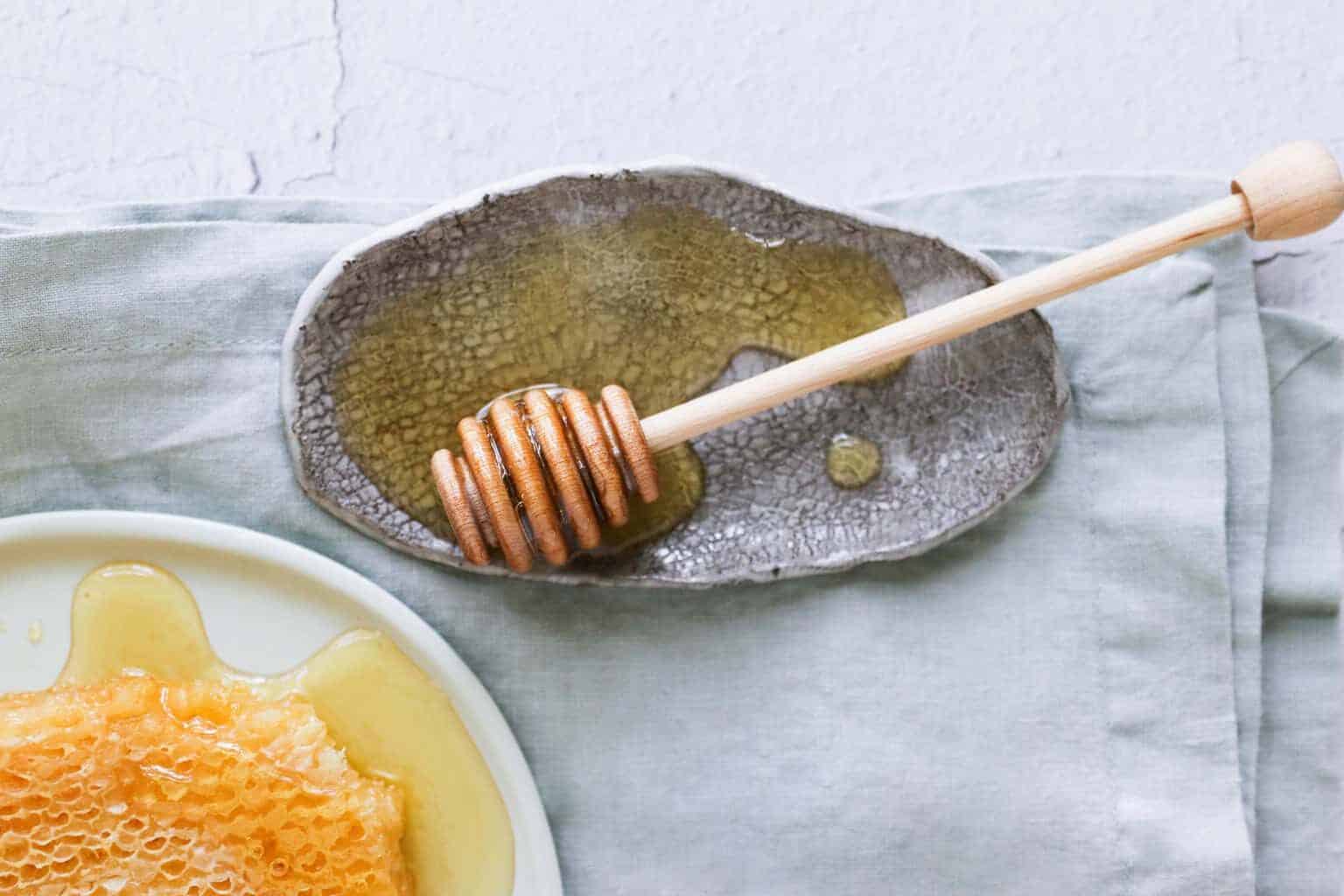
10. Raw honey
Honey has been used for years to naturally lighten hair and give it a soft, sun-kissed glow. Mix 4 tablespoons of raw honey with 1 tablespoon of water, and apply the mixture to your hair and scalp.
Pop on a shower cap and let it sit for an hour. Rinse the mixture out of your hair, and shampoo, condition, and style as usual.
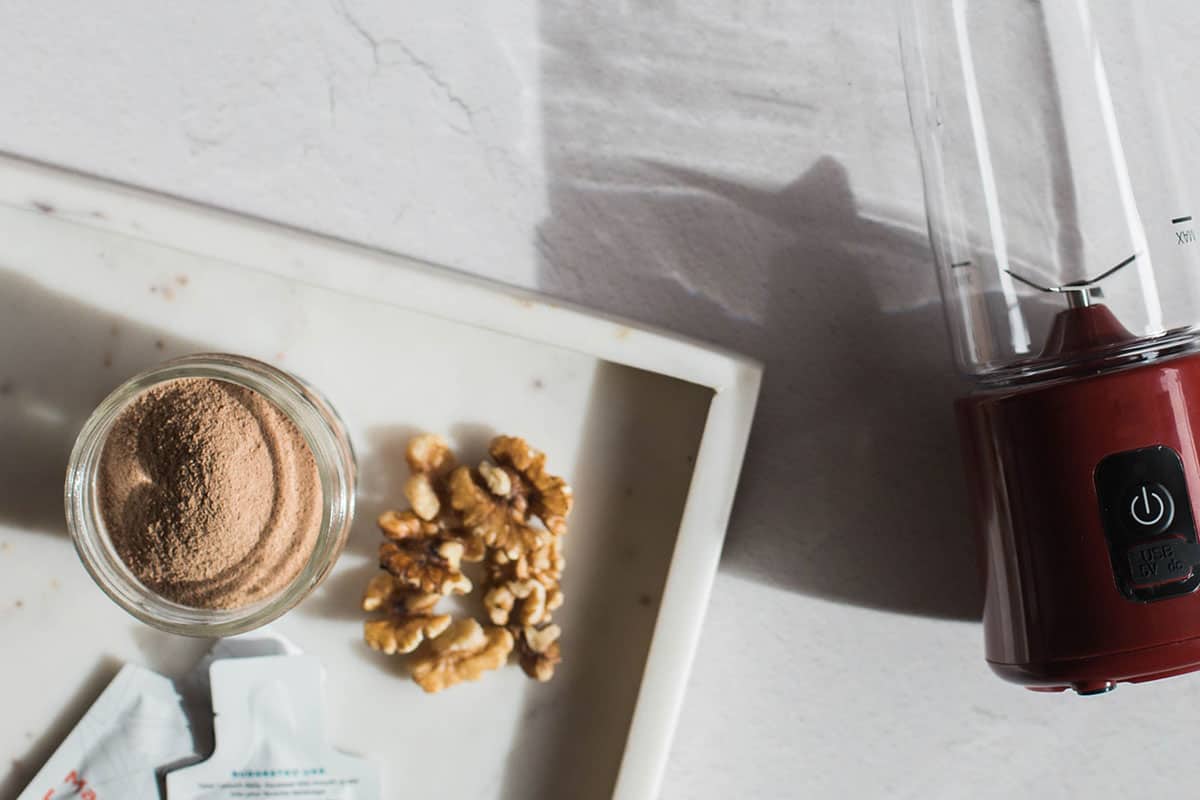
11. Walnut powder
Not only do crushed walnut shells replenish vitamins and minerals in parched hair, but they’re also said to darken locks and get rid of grays. Crush 10–15 walnut shells, and soak them in boiling water for 30 minutes. Cool the liquid completely. Then strain out the shells, and apply the liquid to your hair using a cotton ball. Let it sit for at least an hour before rinsing.
Note: if you don’t want to mess with the walnut shells, just buy pre-made walnut hull powder. Add 3 tablespoons of the powder to 3 cups of water, which is a good ratio for most people (but it depends on your starting color and how dark you're trying to make it). Then you just boil it like you would the crushed shells.
12. Sage
Although sage leaves are light green, tea made from this herb is said to gently darken hair. Simply boil ½ cup of dry sage leaves in 2 cups of water for 20 minutes and let it cool.
Strain the leaves out, and pour the infusion onto your hair. Let it sit for 30 minutes before rinsing out. Do this daily until your hair darkens to the desired shade and then weekly to maintain the color.
Dull, frizzy hair?

13. Sugar water
If your hair is frizzy, try mixing a packet of granulated sugar (about a teaspoon or so) with a cup of water. Pour a bit into your palms, and then run your hands over dry hair. Your hair will get a slight bit of "crunch" and hold because you basically just made homemade hair spray!
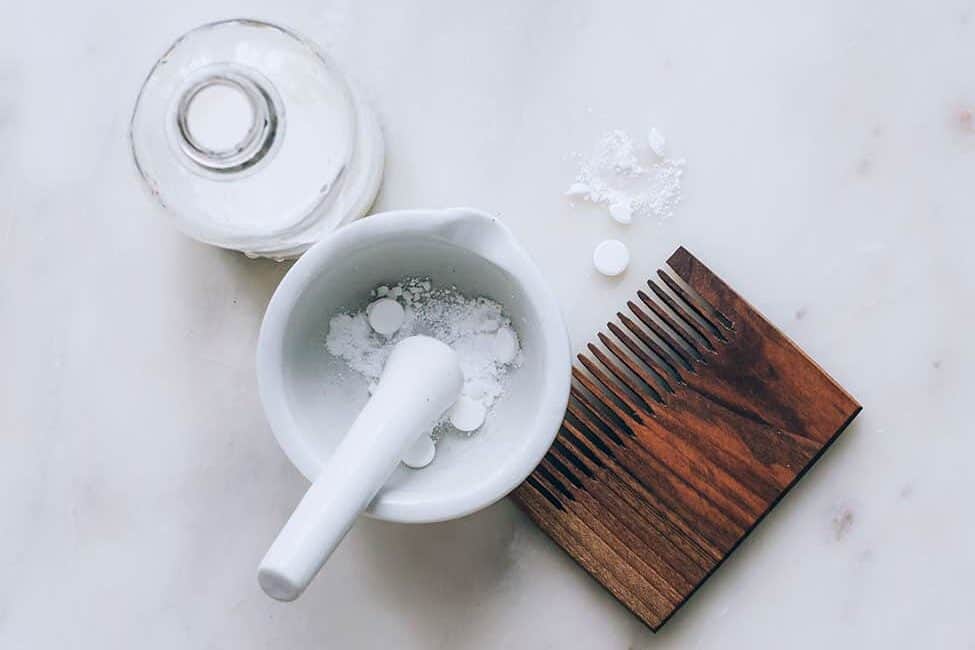
14. Aspirin
Residue and product buildup will also dull your hair. The cure is as simple as crushing an aspirin into shampoo! Just add the aspirin powder to a small amount of shampoo and lather up. The salicylic acid in aspirin helps remove product buildup and restore the natural shine. You can do this every 2 weeks.
Another remedy: baking soda. Combine a handful of shampoo with 1–2 tablespoons of baking soda and massage into hair. Warning: I have used baking soda to intentionally strip out hair color (because the color was too dark), so don't use baking soda on recently colored hair.
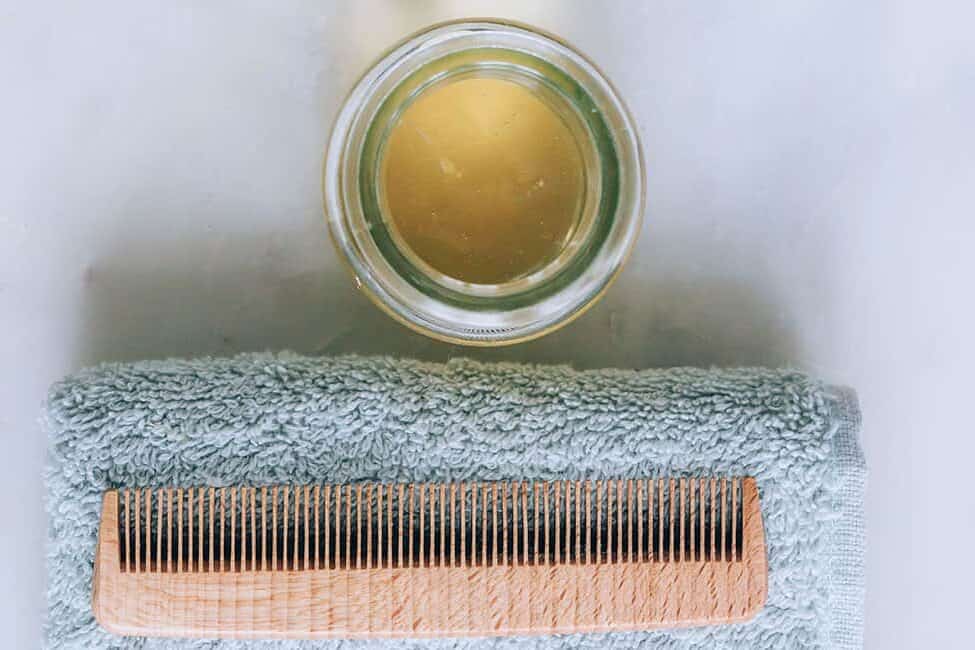
15. Apple cider vinegar
An apple cider vinegar rinse helps clarify and smooth hair cuticles—the secret to shiny hair! "Apple cider vinegar neutralizes and supports the natural biome of the scalp. It has antimicrobial properties and natural alpha-hydroxy acids that encourage cell turnover," says Hill.
Combine a tablespoon of vinegar with ½ cup of water. Add a couple of drops of sweet orange essential oil if the smell is too much, and pour over damp hair.
Comb through your hair, let it sit for 5 minutes, and then rinse. The acidity in the vinegar helps seal the outermost layer of your hair, the cuticle, making it lie flat—and that brings back the shine.

16. Rice water
Rice water has been used as a homemade hair treatment for centuries. Like the name suggests, this is just the starchy, nutrient-packed water left over after rice is cooked (or, in some cases, soaked). It’s loaded with vitamins, minerals, and starch, which are said to help strengthen hair, so it can grow longer and thicker without breaking.
Thoroughly rinse the rice (any rice will do, but I use plain white rice). Plan to cook it on the stove like you normally would, but with 2–3 extra cups of water that you can drain off at the end. When the rice is done cooking, pour the leftover water into a glass bottle, and store it in the bathroom for 3–4 days or in the fridge for up to a week.
Next time you take a shower, pour the rice water over your hair and let sit for 10–15 minutes before rinsing off.
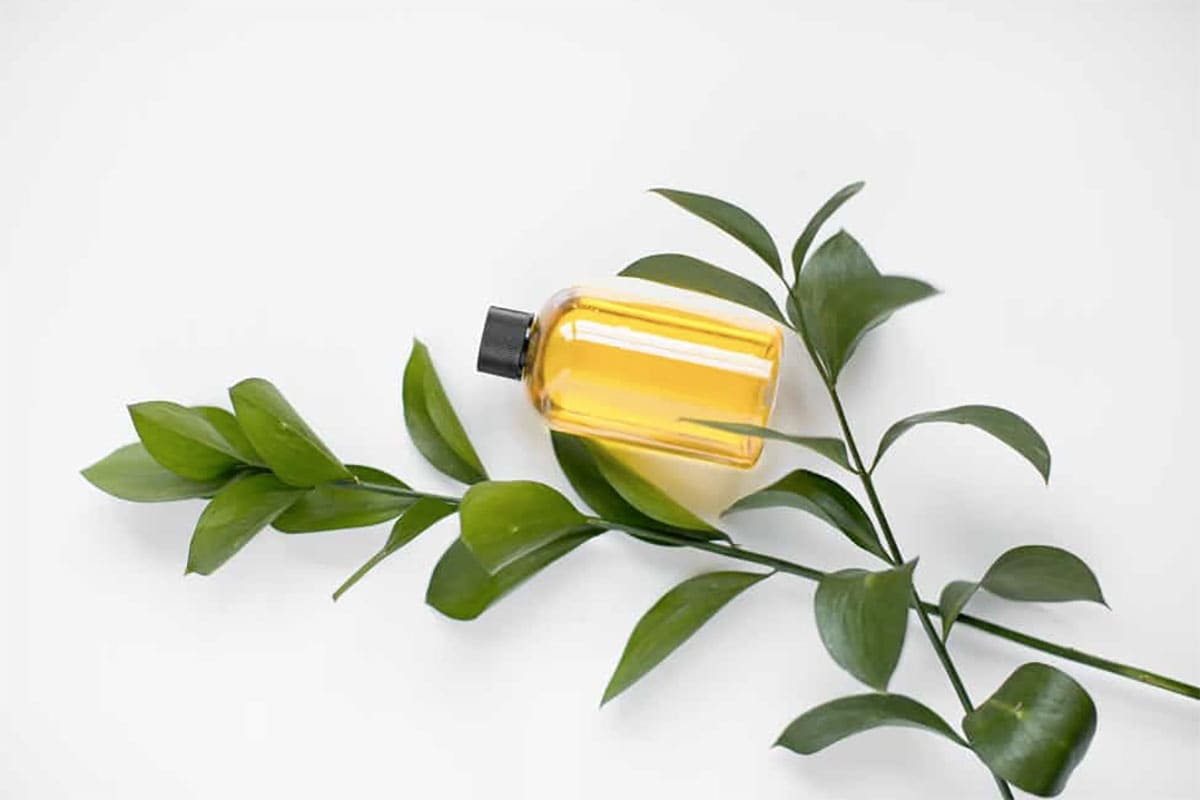
17. Jojoba oil
Jojoba oil used as a moisture treatment is good for dry hair because it works from the inside out, according to Rivera. "It’s very similar to the sebum that your scalp naturally produces and best used as a hot oil treatment to infuse the hair," she says. "Just warm up ¼ cup and massage gently through dry hair from scalp to roots. Wrap hair in a warm towel or shower cap and wait 30 minutes." Rinse out and shampoo twice. Condition as usual.
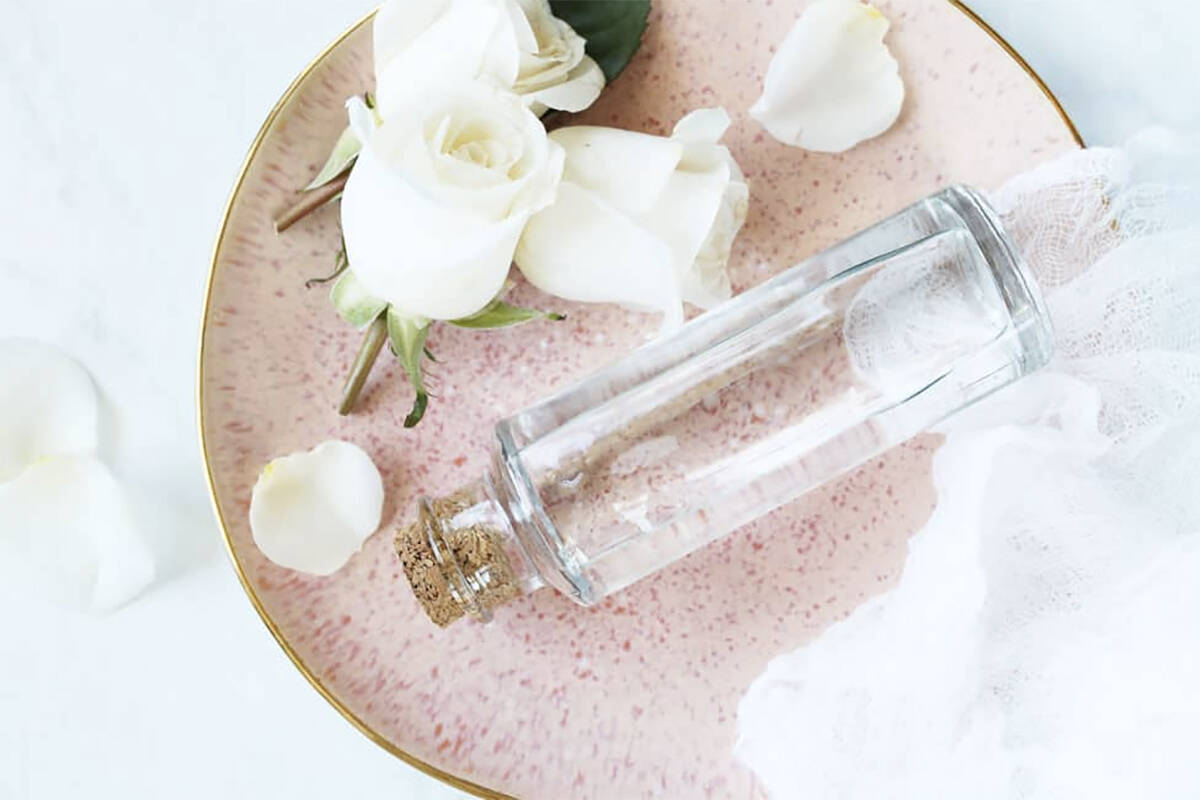
18. Rose water
Rose water is said to stabilize the hair's pH balance, which soothes scalp irritation and softens strands. Thanks to its antiseptic and anti-inflammatory properties [source], it can even lessen dandruff and nourish the scalp.
Pour rose water into a spray bottle and mist onto your hair any time you want to decrease frizz. You can also apply rose water directly to the scalp using cotton swabs. To reduce dandruff and itching, gently massage it into the scalp and leave on overnight.
Thinning hair?

19. Coconut milk
As far as homemade hair treatments go, coconut milk is king. Its high fat content, proteins, and vitamin E nourish the hair from roots to ends, helping to restore thinning hair, split ends, and chemical and heat damage. It also works as a conditioner and detangler, thus reducing breakage and improving hair growth.
Add 2 teaspoons of fractionated coconut oil and ¼ cup full-fat coconut milk along with 2–3 tablespoons of water to thin it out a bit, and mix to combine. Add the mixture to an empty spray bottle. Replace the cap, shake, and spritz generously on damp hair. Let it sink in for 30–60 minutes, and shampoo as usual.
You may also want to try these 9 homemade hair masks for thinning hair.
Split ends?
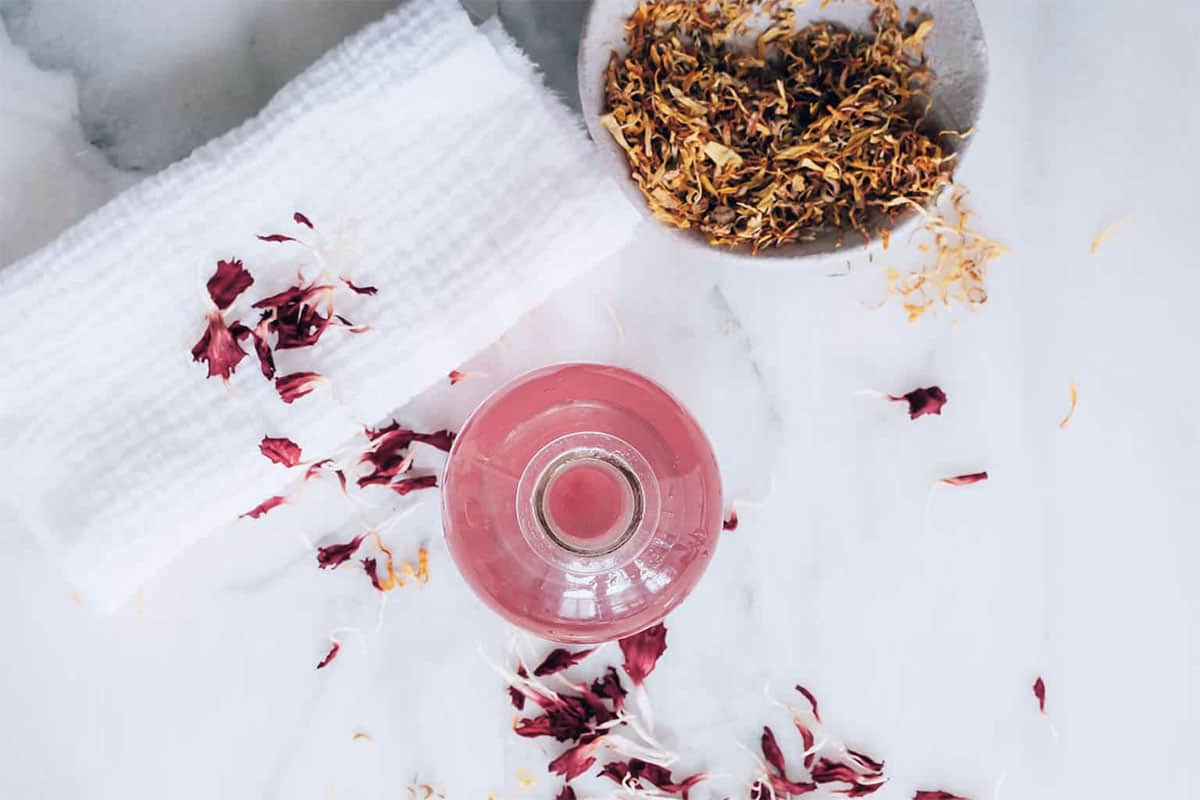
20. Witch hazel + Glycerin
Witch hazel improves scalp circulation, relieves irritation, and leaves your strands feeling soft [source], while glycerin, an emollient used in many cosmetics to lubricate, goes to work to seal strands, make hair look shiny, and leave split ends less noticeable [source].
Just add in some biotin, also known as “vitamin H” for hair [source], and you’ve got yourself a hair-fortifying mask that encourages growth and strengthens strands.
Combine ¼ cup witch hazel, 1 tablespoon glycerin, and 1 biotin capsule in a small bowl and whisk until smooth. Apply to clean, dry hair. Comb through hair until the strands are lightly coated but not soaking wet.
To protect your bed linens, wear a plastic hair cap, use an old pillowcase, or cover your pillowcase with a large towel (you might need to do all of the above). Rinse out the next morning and style as usual.
And why not check out our post on how to get rid of split ends naturally while you're at it?
Hair Mask FAQs
DIY hair masks are hair treatments that you can make at home using natural ingredients like avocado, honey, eggs, coconut oil, and other kitchen staples. They can help nourish and condition your hair and can be a more affordable and natural alternative to commercial hair treatments.
The smoother the homemade hair treatment when it goes on, the easier it will be to remove from your hair. For stickier substances, like banana and avocado, puree them thoroughly in a blender with a bit of oil before applying to hair. You can always try using banana or avocado baby food instead.
Yes! All the oils are interchangeable. If you have a particular hair or scalp issue, it's best to do a little research on the oil beforehand, but otherwise, feel free to swap in any oils you like.
To avoid buildup, I recommend using baking soda as a scalp cleanser every month or so. Simply sprinkle straight baking soda on wet hair, and massage it into the scalp with your fingertips. Shampoo and condition as usual.
Unless stated in the recipe, it’s best not to leave hair products in overnight. Even natural ingredients can clog hair follicles or irritate the scalp, which will only make hair problems worse. I recommend leaving most treatments on for no longer than an hour and thoroughly shampooing the hair when you’re done.
I’m not an expert, but according to Dr. Google, apple cider vinegar is safe for all hair types, even color-treated hair. ACV may even help to strengthen your hair by closing the cuticles and smoothing the hair shaft, thus sealing in color.
Related
Have you tried any of these hair masks? You might want to try even more recipes:
References:
1. Kulczyński B, et al. The profile of secondary metabolites and other bioactive compounds in Cucurbita pepo L. and Cucurbita moschata pumpkin cultivars. Molecules. 2019.
2. Nowak R, et al. Cytotoxic, antioxidant, antimicrobial properties and chemical composition of rose petals. J Sci Food Agric. 2014.
3. Trüeb RM. North American Virginian witch hazel (Hamamelis virginiana): based scalp care and protection for sensitive scalp, red scalp, and scalp burn-out. Int J Trichology. 2014.
4. Zhang H, et al. Recent advances in glycerol polymers: chemistry and biomedical applications. Macromol Rapid Commun. 2014.
5. Trüeb RM. Serum biotin levels in women complaining of hair loss. Int J Trichology. 2016.
58

